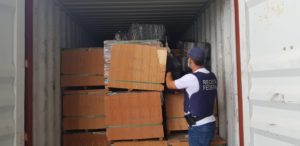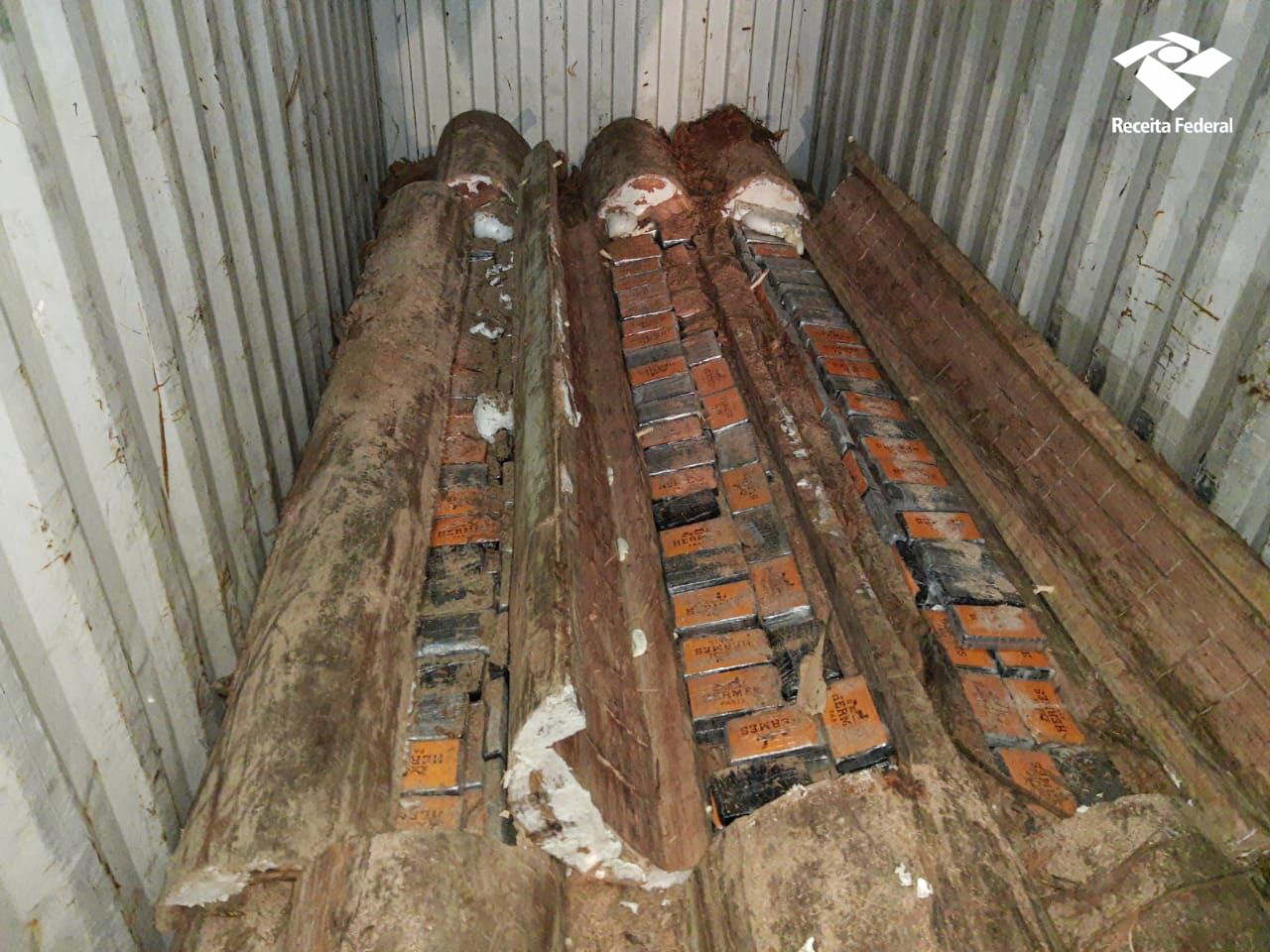Narcotrafficking in Brazil is increasingly intertwined with environmental crimes in the Amazon, researchers warn. Drug trafficking groups are relying more and more on loads of timber and manganese to conceal shipments of drugs abroad.
“Much of the destruction of the forest in the region is the result of illegal activities fueled by complex national and transnational criminal chains,” says the November 2021 study Cartography of Violence in the Amazon Region, of the Brazilian Public Security Forum, in partnership with the Climate and Society Institute of Brazil, and the Emerging Territories Research Group and Resistance Networks in the Amazon, from Pará State University (UEPA, in Portuguese).
According to the study, criminal factions in the Amazon are the drivers of different economies, from timber to ore, real estate speculation, money laundering, and human and wildlife trafficking. “The main product from the rainforest used to conceal the export of drugs to Europe is timber,” UEPA geographer and research coordinator Aiala Couto, told the Brazilian investigative journalism agency Pública.
According to Couto, the routes used for drug trafficking are also used for timber smuggling and some are close to ore smuggling and illegal gold mining areas. Besides the overlapping of routes, the researcher notes a growing connection between drug trafficking and environmental crimes.
Groups engaging in cocaine trafficking are also involved in illegal mining, land grabbing, illegal logging, gold smuggling, and the invasion of indigenous lands. “These groups create companies, launder money, take part in smuggling, and drugs and arms trafficking. The relationship is broad and complex,” Couto told Pública.

24 trees per second
Brazil lost 3,795 hectares of native vegetation cover per day in 2020, the equivalent to 24 trees per second, according to data from the Brazilian Annual Land Use and Land Cover Mapping Project (MapBiomas), an initiative of the Brazilian Climate Observatory in partnership with universities, nongovernmental organizations (NGOs), and technology companies.
According to MapBiomas, deforestation in the country increased by an average of 13.6 percent in 2020, reaching 13,853 square kilometers (1,385,300 hectares), an area equivalent to the Bahamas. Of this total, 61 percent is in the Amazon.
“From January to November 2021, the Amazon lost 10,222 km² of forest, an area equivalent to seven times the city of São Paulo,” said the NGO Deforestation Alert System of the Institute of People and the Environment of the Amazon (Imazon, in Portuguese), which monitors the region with satellite images. “This is the highest accumulation in the last 10 years for the period, being 31 percent higher than that recorded in 2020,” Imazon said.
Brazilian security forces operations indicate that the acceleration of deforestation is also linked to marijuana cultivation in the Amazon. According to the international organization InSight Crime, which specializes in security threats in Latin America and the Caribbean, there have been recorded cases of criminal gangs illegally buying land in the rainforest to profit from illegal logging and even to establish marijuana plantations.
In August 2020, for example, the Civil Police (PC, in Portuguese) of Pará seized more than 400,000 marijuana plants in this state during operation Accursed Harvest II (Colheita Maldita II). “According to the PC, 200 tons of [cannabis] herb were found in 219,000 square meters of irregular plantation,” the Brazilian news site G1 reported.
Increase in homicides
Research from the Brazilian Public Security Forum indicates that drug trafficking and deforestation are closely linked to increased violence in the region. “While in the southeast the homicide mortality rate dropped 19.2 percent between 1980 and 2019, there was a 260.3 percent increase in the north [Amazon states],” the study says.
According to the study, at least two factors seem to directly contribute to the growth of lethal violence in the Amazon: the large presence of organized crime factions (which vie for control of drug routes) and the advance of deforestation.









